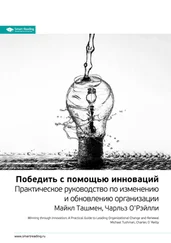Flatt S. 1993. The Innovation Edge: How Top Management Demography Makes a Difference. Ph. D. diss., University of California, Berkeley.
Florida R. and R. Kenney. 1990. The Breakthrough Illusion. New York: Basic Books.
Fortune. 1991. Today’s Leaders Look to Tomorrow. March 26.
Fortune . 1995. A Conversation with Roberto Goizueta and Jack Welch. December 11.
Foster R. 1986. Innovation: The Attacker’s Advantage. New York: Summit Books.
Foulkes F. 1991. Executive Compensation: A Strategic Guide for the 1990s. Boston: Harvard Business School Press.
Gabarro J. 1987. The Dynamics of Taking Charge. Boston: Harvard Business School Press.
Galbraith J. 1973. Designing Complex Organizations. Reading, Mass.: Addison-Wesley.
Galunic C. and K. Eisenhardt. 1994. Reviewing the Strategy– Structures-Performance Paradigm. In: B. Staw and L. Cummings (eds.), Research in Organization Behavior. Greenwich, Conn.: JAI Press.
Gargiulo M. 1993. Two-Step Leverage: Managing Constraint in Organizational Politics. Administrative Science Quarterly 38: р. 1–19.
Gersick C. 1991. Revolutionary Change Theories: A Multi-Level Exploration of the Punctuated Equilibrium Paradigm. Academy of Management Review 16: р. 1–32.
Gersick C. 1994. Pacing Strategic Change: The Case of New Ventures. Academy of Management Journal 37: р. 9–45.
Glassmeier A. 1991. Technological Discontinuities and Flexible Production Networks: The Case of Switzerland and the World Watch Industry. Research Policy 20: р. 469–485.
Gomory R. 1989. From the Ladder of Success to the Product Development Cycle. Harvard Business Review (November-December): р. 110–115.
Gomory R. 1991. The Technology-Product Relationship: Early and Late Stages. In: N. Rosenberg, R. Landau and D. Mowery (eds.), Technology and the Wealth of Nations . Stanford, Calif.: Stanford University Press.
Gould S. 1987a. The Panda’s Thumb of Technology. Natural History 1: р. 14–23.
Gould S. 1987b. Time’s Arrow, Time’s Cycle. Cambridge, Mass.: Harvard University Press.
Greenwood R. and H. R. Hinings. 1993. Understanding Strategic Change. Academy of Management Journal 6: р. 1052–1081.
Gresov C. 1989. Exploring Fit and Misfit with Multiple Contingencies. Administrative Science Quarterly 34: р. 431–453.
Gresov C., R. Drazin and A. Van de Ven. 1989. Work Unit Uncertainty, Design and Morale. Organization Science 10: р. 45–62.
Grinyer R. and P. McKienan. 1990. Generating Major Change in Stagnating Companies. Strategic Management Journal 11: р. 131–146.
Hambrick D. and R. D’Aveni. 1988. Large Corporate Failures as Downward Spirals. Administrative Science Quarterly 33: р. 1–28.
Hamel G. and C. K. Prahalad. 1989. Strategic Intent. Harvard Business Review, 67: р. 63–76.
Hamel G. and C. K. Prahalad. 1994. Competing for the Future. Boston: Harvard Business School Press.
Hammer M. and J. Champy. 1993. Reengineering the Corporation. New York: Harper Business.
Hannan M. and G. Carroll. 1992. Dynamics of Organizational Populations. New York: Oxford University Press.
Hannan M. and J. Freeman. 1989. Organizational Ecology. Cambridge, Mass.: Harvard University Press.
Haveman H. 1992. Between a Rock and a Hard Place: Organization Change Under Conditions of Fundamental Environment Transformation. Administrative Science Quarterly 37: р. 48–75.
Hays L. 1994. Gerstner Is Struggling to Change Ingrained IBM Culture. Wall Street Journal, May 13.
Henderson R. 1995. Of Life Cycles Real and Imaginary: The Unexpectedly Long Old Age of Optical Lithography. Research Policy 24 (4): р. 631–643.
Henderson R. and K. Clark. 1990. Architectural Innovation: The Reconfiguration of Existing Product Technologies and the Failure of Existing Firms. Administrative Science Quarterly 35: р. 9–30.
Henkoff R. 1994. Finding and Keeping the Best Service Workers. Fortune, October 3.
Herstatt C. and E. von Hippel. 1992. Developing New Product Concepts via the Lead User Method: A Case Study in a ‘Low-Tech’ Field. Journal of Product Innovation Management 9: р. 213–221.
Hof R. 1992. Inside Intel. Business Week, June 1.
Hofstede G. 1991. Cultures and Organizations. New York: McGraw– Hill.
Hollander S. 1965. Sources of Efficiency. Cambridge, Mass.: MIT Press.
Homans G. 1950. The Human Group. Orlando, Fla.: Harcourt Brace.
House R., W. Spangler and J. Wyocke. 1991. Personality and Charisma in the U. S. Presidency. Administrative Science Quarterly 36: р. 364–396.
Howard R. 1992. The CEO as Organizational Architect: An Interview with Xerox’s Paul Allaire. Harvard Business Review (September – October): р. 107–119.
Huber G. 1991. Organization Learning: Contributing Processes and the Literature. Organization Science 2: р. 88–115.
Huber G. and W. Glick (eds.). 1993. Organizational Change and Design. New York: Oxford University Press.
Hughes T. 1983. Networks of Power. Baltimore, Md.: Johns Hopkins Press.
Hurst D. 1995. Crisis and Renewal. Boston: Harvard Business School Press.
Iansiti M. and K. Clark. 1994. Integration and Dynamic Capability. Industry and Corporation Change 3: р. 557–606.
Ibarra H. 1993. Network Centrality, Power and Innovation Involvement. Academy of Management Journal 36: р. 471–501.
Ibarra H. and S. Andrews. 1993. Power, Social Influence, and Sense Making: Effects of Network Centrality on Employee Perceptions. Administrative Science Quarterly 38: р. 277–303.
Imai K., I. Nonaka and H. Takeuchi. 1985. Managing the New Product Development Process: How Japanese Firms Learn and Unlearn. In: K. Clark, R. Hayes and C. Lorenz (eds.), The Uneasy Alliance, edited by Boston: Harvard Business School Press.
Ingrassia P. and J. White. 1994. Comeback: The Fall and Rise of the American Automobile Industry. New York: Simon & Schuster.
Jackson S. 1992. Consequences of Group Composition for the Interpersonal Dynamics of Strategic Issue Processing. Advances in Strategic Management 8: р. 345–382.
Jackson S. and S. Dutton. 1988. Discerning Threats and Opportunities. Admin i strative Science Quarterly 33: р. 370–387.
Jasinowski J. and R. Hamrin. 1995. Making It in America: Proven Paths to Success from 50 Top Companies. New York: Simon & Schuster.
Jellinek M. and C. Schoonhoven. 1990. The Innovation Marathon. New York: Blackwell.
Jick T. 1991. Implementing Change. Case 9-491-114. Boston: Harvard Business School Publishing.
Kano N. 1993. A Perspective on Quality Activities in American Firms. California Management Review (Spring): р. 12–30.
Kanter R., J. North, L. Richardson, С. Ingols and J. Zolner. 1991. Engines of Progress: Designing and Running Entrepreneurial Vehicles in Established Companies; Raytheon’s New Product Center, 1969–1989. Journal of Business Venturing 6.
Kanter R., В. Stein and T. Jick. 1992. The Challenge of Organizational Change. New York: Free Press.
Katsumata M. 1994. Interview with Ciba-Geigy Japan President Paul Dudler. The Nikkei Weekly, November 14.
Katz D. and R. Kahn. 1966. Social Psychology of Organizations. New-York: Wiley.
Katz R. 1997. Managing Professional Careers: The Influence of Job Longevity and Group Age. In: M. Tushman and P. Anderson (eds.), Managing Strategic Innovation . New York: Oxford University Press: р. 219–233.
Читать дальше
Конец ознакомительного отрывка
Купить книгу












